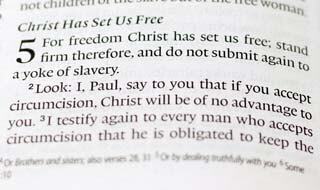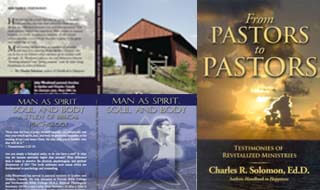Years ago Linda and I befriended a young man whose company makes olive wood Christmas ornaments. Fadi is a Palestinian Orthodox Christian who is from Bethlehem. His display at our local theme park is identified with this sign; Il Bambino: Made in Bethlehem – Israel. One of these ornaments was given to us with his personal signature, which makes it more special.
In the nativity narrative we see many “signs” that authenticate the birth of Jesus, the Son of God. Imagine what it would have been like to be a shepherd outside of Bethlehem, Judea about 2000 years ago. As they watched over their flocks that holy night, the Herald Angel appeared with glorious light declaring the awesome birth announcement:
“Do not be afraid, for behold, I bring you good tidings of great joy which will be to all people. For there is born to you this day in the city of David a Savior, who is Christ the Lord. And this will be the sign to you: You will find a Babe wrapped in swaddling cloths, lying in a manger” (Luke 2:10-12).
The brilliant glory of the heavenly messenger turned their hillside from night to day, terrifying the unsuspecting shepherds. No sooner did they grasp this message than another delegation of angels confirmed this amazing news: “Glory to God in the highest, And on earth peace, goodwill toward men!” (Luke 2:14).
Now, would these shepherds dismiss this vision and keep it to themselves? No way…
“So it was, when the angels had gone away from them into heaven, that the shepherds said to one another, ‘Let us now go to Bethlehem and see this thing that has come to pass, which the Lord has made known to us'” (Luke 2:15).
God knew that such a royal birth would require signs to help the people believe the true identity of the baby Who became known as Immanuel–God with us. The Herald Angel identified this sign for them: “You will find a Babe wrapped in swaddling cloths, lying in a manger.” How unusual! A newborn in Bethlehem that very night, nestled in a feeding trough for animals and wrapped in available material–“swaddling cloths.”
When the New Testament uses the term “sign” in this way it refers to a distinctive, recognizable experience that shows God’s miraculous intervention. The apostle Paul confided that “Jews [and the rest of us] request a sign…” (1 Cor. 1:22).
1. The Sign of the stable
The unique birthplace of Jesus–a stable–was due to the discouraging answer given to Joseph and Mary from the innkeeper when they arrived from Nazareth: “no room!”
Such was the condescension of God the Son; His birth was not in a palace with the best furniture and clothing the world had to offer. Instead, it was witnessed by a menagerie of animals, Joseph being the virgin Mary’s only attendant.
So when the shepherds searched for the Christ child, the scene they beheld was just as the angel had prophesied: “And they came with haste and found Mary and Joseph, and the Babe lying in a manger” (Luke 2:16). What fitting symbolism: the Savior Who became known as the “Bread of Life” was born in Bethlehem (“House of Bread”), and was placed in the only available cradle–the manger (a place for feeding of animals).
The miraculous announcement by God’s heavenly messengers was thus confirmed by the sign given to the shepherds. These men then believed and became local witnesses: “Now when they had seen Him, they made widely known the saying which was told them concerning this Child” (Luke 2:17).
To more fully appreciate the signs God provided to confirm and authenticate the supernatural birth of Jesus, study the biblical context and parallel passages. Signs were given earlier to Zachariah and Elizabeth (Luke ch. 1). Mary and Joseph received angelic visits, heard prophetic blessings over the Christ child in the Temple, and later received gifts from the magi (Luke 1:26-38; 2:22-38; Matt. 1:8-2:12).
2. The sign of Bethlehem
The Gentile wise men had seen His star in the east and had come to worship the King! Their trip was assisted by Jerusalem’s Bible scholars who quoted from the prophet Micah:
“But you, Bethlehem Ephrathah,
Though you are little among the thousands of Judah,
Yet out of you shall come forth to Me
The One to be Ruler in Israel,
Whose goings forth are from of old,
From everlasting” (Micah 5:2).
If only eye witness evidence and confirming signs guaranteed faith! But Scripture and personal experience indicate otherwise. “But without faith it is impossible to please Him, for he who comes to God must believe that He is, and that He is a rewarder of those who diligently seek Him” (Heb. 11:6 emphasis added). Herod the Great heard the scriptural prophecy and the testimony of the magi. Yet his pretense of promised worship turned into the slaughter of the innocents in Bethlehem.
Three decades later the religious leaders had to admit that the miracles of Jesus were real and indisputable. But instead of receiving the Messiah, they plotted the Crucifixion. They ignored the signs and cared more about their social status than the Truth. John 11: 45-52 records the stubborn unbelief of the religious leaders:
“Then many of the Jews who had come to Mary, and had seen the things Jesus did [the raising of her brother Lazarus], believed in Him. But some of them went away to the Pharisees and told them the things Jesus did. Then the chief priests and the Pharisees gathered a council and said, ‘What shall we do? For this Man works many signs. If we let Him alone like this, everyone will believe in Him, and the Romans will come and take away both our place and nation.’ And one of them, Caiaphas, being high priest that year, said to them, ‘You know nothing at all, nor do you consider that it is expedient for us that one man should die for the people, and not that the whole nation should perish.’ Now this he did not say on his own authority; but being high priest that year he prophesied that Jesus would die for the nation, and not for that nation only, but also that He would gather together in one the children of God who were scattered abroad.” [1]
Sometimes a skeptic will claim that the only hindrance to his/her faith is a lack of proof. However, the council’s choice (above) demonstrates that one’s heart determines belief or unbelief.
Dear reader, have you accepted the signs that supernaturally point to the reality of Jesus Christ? If you have inherited unbelief from an atheist/agnostic world view, reconsider the evidence. Pray to God, asking Him to reveal Himself to you. Search the Scriptures with a receptive heart. When you take a step of faith and receive Jesus as your personal Savior, the miracle of forgiveness and the gift of eternal life will be additional signs to you, confirming spiritual truth.
We conclude with the purpose statement of John’s Gospel: “And truly Jesus did many other signs in the presence of His disciples, which are not written in this book; but these are written that you may believe that Jesus is the Christ, the Son of God, and that believing you may have life in His name” (John 20:30,31).
Let’s join the shepherds of Bethlehem to believe, confirm and declare this Good News!
[1] The Sanhedrin’s unbelief in the face of indisputable evidence also showed up in the following year(s). See Acts 4:13-22.
For further teaching on the nature and defense of biblical miracles see Rick Wades’ article, “Miracles, What are They?” at http://probe.org/miracles/
The olive wood ornament is from Fadi’s shop: http://www.ilbambino.org/mainpage/index.html
This article is copyrighted by John B. Woodward, 2009. Permission is given to reprint it for non-commercial use. Biblical quotations are from the New King James Version, copyright by Thomas Nelson.

















